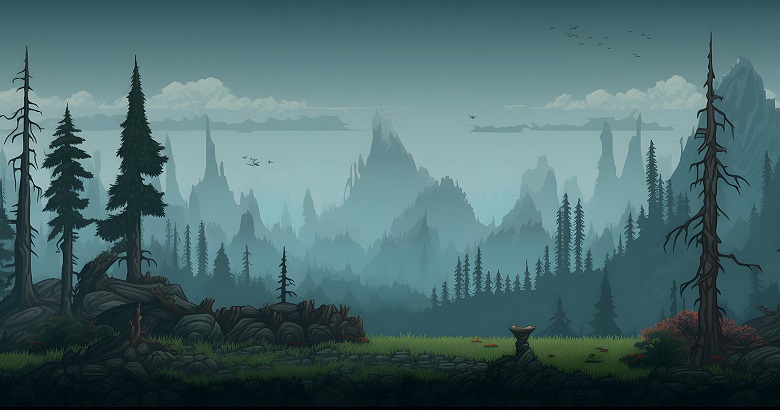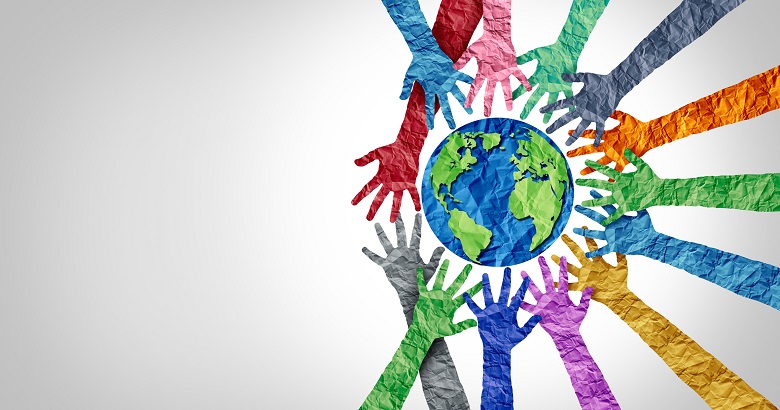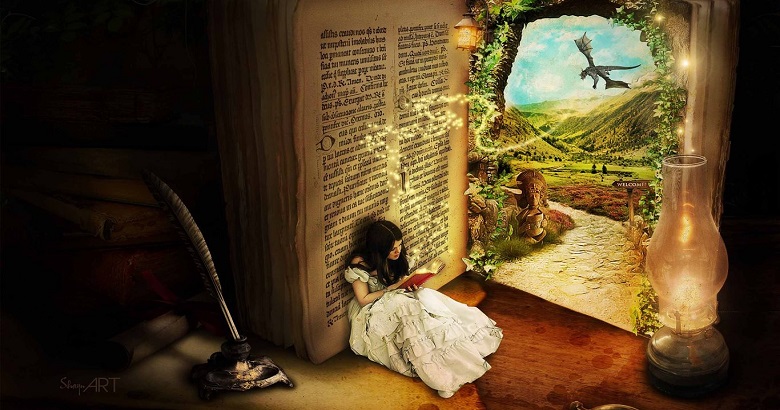The genres of paranormal and fantasy books, while often intertwined and sometimes confused with each other, represent distinct worlds within the realm of literature. Each offers a unique blend of escapism, imagination, and creative storytelling, but they differ significantly in themes, settings, characters, and the rules governing their worlds. This blog will delve deeply into the distinctions between paranormal and fantasy literature, exploring the nuances that set them apart, their origins, key elements, and their place in the broader literary landscape.
1. Defining Paranormal and Fantasy
To understand the difference between paranormal and fantasy, it’s essential first to define what each genre encompasses.
Paranormal literature often revolves around the existence of supernatural elements within the real world. These elements include ghosts, spirits, vampires, werewolves, witches, psychics, and other entities or phenomena that cannot be explained by science or the natural laws of the world as we know it. Paranormal books are typically set in a world that closely resembles our own, with the addition of these supernatural occurrences. The characters in paranormal stories are often ordinary people who encounter or are affected by these otherworldly elements.
Fantasy literature, on the other hand, is rooted in entirely fictional worlds where magic, mythical creatures, and imagined universes are the norm. These worlds are often governed by their own set of rules and laws, which differ from those of the real world. Fantasy literature can include a wide range of subgenres, such as high fantasy, where the story takes place in a completely fictional world (e.g., J.R.R. Tolkien’s The Lord of the Rings), and urban fantasy, where magical elements are woven into modern, urban settings (e.g., Neil Gaiman’s Neverwhere).
While both genres incorporate supernatural elements, the key difference lies in the setting and the nature of these elements. Paranormal books typically introduce the supernatural into the real world, while fantasy books often transport the reader to an entirely different world where the supernatural is part of the fabric of reality.
2. Historical Origins and Evolution
Understanding the historical origins of paranormal and fantasy literature provides further insight into their differences.
Paranormal literature has its roots in folklore, mythology, and religious texts that have been passed down through generations. Stories of ghosts, spirits, and other supernatural beings have been part of human culture for centuries, often serving as cautionary tales or explanations for the unknown. The Gothic literature of the 18th and 19th centuries, such as Mary Shelley’s Frankenstein and Bram Stoker’s Dracula, played a significant role in shaping the modern paranormal genre. These stories explored themes of horror, the macabre, and the supernatural, often set against dark, eerie backdrops that heightened the sense of dread and suspense.
As the genre evolved, paranormal literature expanded to include a broader range of supernatural elements and became more diverse in its themes and settings. The 20th century saw a surge in paranormal fiction, particularly with the rise of the horror genre and the popularity of authors like Stephen King and Anne Rice, who introduced new dimensions to paranormal storytelling.
Fantasy literature has an equally rich history, with roots in ancient mythology, epic poetry, and medieval romance. The works of Homer, such as The Odyssey, are often cited as early examples of fantasy, as they feature gods, monsters, and magical phenomena in their narratives. The Arthurian legends of medieval Europe also contributed to the development of fantasy literature, with tales of knights, dragons, and quests for magical artifacts.
The modern fantasy genre began to take shape in the 19th and early 20th centuries with the works of authors like George MacDonald and Lord Dunsany. However, it was J.R.R. Tolkien’s The Hobbit and The Lord of the Rings that truly defined the genre, establishing many of the tropes and conventions that continue to influence fantasy literature today. The rise of fantasy literature in the latter half of the 20th century coincided with the popularity of role-playing games like Dungeons & Dragons, which further cemented the genre’s place in popular culture.
3. Key Elements and Themes

Both paranormal and fantasy literature share common elements, such as the presence of supernatural beings and the exploration of the unknown. However, the way these elements are used and the themes they explore can differ significantly.
Paranormal Literature:
- Setting: Paranormal stories are often set in the real world, albeit one that is slightly altered by the presence of supernatural elements. The setting may be a small, seemingly ordinary town with a dark secret or a bustling city where supernatural beings live hidden among humans.
- Characters: Characters in paranormal literature are usually ordinary people who find themselves confronted with the supernatural. They may be skeptical at first but are gradually drawn into the world of the paranormal. Alternatively, the protagonist may be a supernatural being trying to navigate the human world.
- Themes: Common themes in paranormal literature include the unknown, the afterlife, good versus evil, and the consequences of tampering with forces beyond human understanding. Paranormal stories often explore the boundaries between reality and the supernatural and the psychological impact of encountering the unknown.
Fantasy Literature:
- Setting: Fantasy stories typically take place in entirely fictional worlds, often with their own geography, history, and cultures. These worlds may be inspired by real-world mythologies, medieval Europe, or entirely original creations.
- Characters: Fantasy literature often features larger-than-life characters, such as heroes, wizards, kings, and mythical creatures. These characters may embark on epic quests, engage in battles between good and evil, or seek to fulfill a prophecy.
- Themes: Common themes in fantasy literature include heroism, the struggle between good and evil, the hero’s journey, and the exploration of magic and its consequences. Fantasy stories often delve into the nature of power, the responsibilities of those who wield it, and the consequences of its misuse.
4. Subgenres and Hybrids
Both paranormal and fantasy literature have spawned numerous subgenres and hybrids, further blurring the lines between the two.
Paranormal Subgenres:
- Paranormal Romance: A popular subgenre that combines elements of romance with the supernatural. Stories often revolve around the romantic relationship between a human and a supernatural being, such as a vampire, werewolf, or ghost. Notable examples include Stephenie Meyer’s Twilight series and J.R. Ward’s Black Dagger Brotherhood series.
- Paranormal Mystery/Thriller: This subgenre blends paranormal elements with mystery or thriller plots. The protagonist may be a detective or investigator who solves crimes involving supernatural elements. Examples include Charlaine Harris’s Sookie Stackhouse series and Jim Butcher’s Dresden Files.
- Paranormal Horror: This subgenre focuses on the darker, more terrifying aspects of the paranormal. Stories may involve haunted houses, demonic possession, or encounters with malevolent spirits. Examples include Shirley Jackson’s The Haunting of Hill House and Stephen King’s The Shining.
Fantasy Subgenres:
- High Fantasy: Also known as epic fantasy, this subgenre is characterized by grand, sweeping narratives set in entirely fictional worlds. High fantasy often involves a hero’s journey, battles between good and evil, and the fate of the world hanging in the balance. J.R.R. Tolkien’s The Lord of the Rings and George R.R. Martin’s A Song of Ice and Fire are prime examples.
- Urban Fantasy: This subgenre combines elements of fantasy with modern, urban settings. Magic and supernatural beings exist alongside the ordinary, everyday world, often hidden from most people. Notable examples include Neil Gaiman’s Neverwhere and Cassandra Clare’s The Mortal Instruments series.
- Dark Fantasy: A subgenre that blends fantasy with horror elements. Dark fantasy stories often explore the darker, more sinister aspects of magic and the supernatural. Examples include Clive Barker’s Weaveworld and Michael Moorcock’s Elric series.
Hybrid Genres:
- Paranormal Fantasy: This hybrid genre combines elements of both paranormal and fantasy literature. Stories may feature supernatural beings and magic set in a world that is both familiar and otherworldly. The lines between the real world and the supernatural are often blurred. Examples include Anne Bishop’s Black Jewels series and Patricia Briggs’s Mercy Thompson series.
- Supernatural Fiction: This broader genre encompasses both paranormal and fantasy elements, often focusing on the interaction between the supernatural and the mundane world. It can include everything from ghost stories to epic fantasy sagas.
5. Tone and Atmosphere

The tone and atmosphere of paranormal and fantasy books are also key distinguishing factors.
Paranormal Literature:
- Tone: Paranormal stories often have a darker, more suspenseful tone. The presence of the supernatural introduces an element of fear or unease, and the protagonist’s journey may involve confronting their deepest fears or uncovering hidden truths. Even when the tone is lighter, as in some paranormal romances, there is often an undercurrent of tension due to the supernatural elements.
- Atmosphere: The atmosphere in paranormal literature is usually one of mystery and foreboding. Settings may include haunted houses, dark forests, or small towns with dark secrets. The supernatural elements are often hidden, waiting to be discovered, which creates a sense of anticipation and suspense.
Fantasy Literature:
- Tone: Fantasy literature can vary widely in tone, from the whimsical and lighthearted to the epic and serious. High fantasy often has a more grandiose, heroic tone, while urban fantasy may be more grounded and gritty. The tone of a fantasy story is often shaped by the world it takes place in and the nature of the character’s journey.
- Atmosphere: The atmosphere in fantasy literature is often one of wonder and adventure. The fictional worlds in which these stories take place are rich in detail, with their own histories, cultures, and landscapes. The presence of magic and mythical creatures adds to the sense of wonder, while the epic scale of the stories often creates a sense of grandeur.
6. Reader Expectations
Reader expectations play a significant role in shaping the differences between paranormal and fantasy literature.
Paranormal Readers:
- Expectations: Readers of paranormal literature often expect a blend of the familiar and the supernatural. They enjoy stories that introduce otherworldly elements into the real world, often with a focus on mystery, suspense, or romance. Paranormal readers may also be drawn to the psychological aspects of the genre as characters grapple with the unknown and the unexplainable.
Appeal: The appeal of paranormal literature lies in its ability to make the supernatural feel close and accessible. Readers are drawn to the idea that the world we know may be more mysterious and dangerous than it seems, and they enjoy exploring the hidden corners of reality where the paranormal lurks.
Fantasy Readers:
- Expectations: Readers of fantasy literature expect to be transported to entirely new worlds where magic is real and anything is possible. They enjoy stories with richly detailed settings, complex characters, and epic plots. Fantasy readers often look for a sense of escapism, as well as themes of heroism, adventure, and the struggle between good and evil.
- Appeal: The appeal of fantasy literature lies in its boundless imagination and creativity. Readers are captivated by the richly imagined worlds and the opportunity to explore cultures, histories, and landscapes that are entirely different from our own. Fantasy stories often provide a sense of hope and wonder as characters overcome great odds to achieve their goals.
7. Literary Techniques and Styles
The literary techniques and styles employed in paranormal and fantasy literature also differ, reflecting the unique demands of each genre.
Paranormal Literature:
- Style: Paranormal literature often employs a more grounded, realistic style, even when dealing with supernatural elements. The language may be more descriptive and atmospheric, focusing on creating a sense of suspense and mystery. Dialogue may reflect the characters’ struggle to understand or accept the supernatural, adding to the tension.
- Techniques: Common techniques in paranormal literature include foreshadowing, unreliable narrators, and the use of symbolism to convey the presence of the supernatural. The pacing may be slower, building up tension as the protagonist uncovers the truth about the paranormal elements in the story.
Fantasy Literature:
- Style: Fantasy literature often employs a more descriptive and imaginative style, with rich world-building and vivid descriptions of magical phenomena. The language may be more elaborate or poetic, reflecting the grandeur of the fictional world. Dialogue may include archaic or invented languages, adding to the sense of immersion.
- Techniques: Common techniques in fantasy literature include world-building, the use of archetypes, and the hero’s journey narrative structure. The pacing may vary, with epic battles and quests interspersed with moments of introspection or exploration. Fantasy stories often include multiple plotlines and complex character arcs, creating a sense of depth and scope.
8. Cultural Impact and Popularity

Both paranormal and fantasy literature have had a significant impact on popular culture, but their influence has manifested in different ways.
Paranormal Literature:
- Cultural Impact: Paranormal literature has had a profound impact on popular culture, particularly in the realms of horror, thriller, and romance. Iconic characters like Dracula, Frankenstein’s monster, and the ghosts of The Haunting of Hill House have become cultural touchstones, inspiring countless adaptations and reinterpretations in film, television, and other media.
- Popularity: The popularity of paranormal literature has fluctuated over the years, often driven by trends in the horror and romance genres. The early 2000s saw a resurgence in paranormal romance with the success of series like Twilight and The Southern Vampire Mysteries. Paranormal thrillers and horror stories continue to captivate readers, particularly those who enjoy a blend of suspense and the supernatural.
Fantasy Literature:
- Cultural Impact: Fantasy literature has had a lasting impact on popular culture, influencing everything from literature and film to video games and tabletop role-playing games. The worlds of Middle-earth, Westeros, and Hogwarts have become cultural icons, shaping the imaginations of generations of readers and creators. The themes and archetypes of fantasy literature continue to resonate, inspiring new works across various media.
- Popularity: Fantasy literature has remained consistently popular, with a dedicated and passionate fanbase. The genre has seen significant growth in recent years, driven by the success of adaptations like Game of Thrones and The Witcher. Fantasy conventions, fan communities, and online forums have cemented the genre’s place in popular culture, creating a vibrant and engaged community of readers and creators.
Wrapping Up
Paranormal and fantasy literature share some common elements, they represent distinct genres with their own unique characteristics, themes, and appeals. Paranormal literature brings the supernatural into the real world, creating stories that blend the familiar with the mysterious and the unknown. On the other hand, fantasy literature transports readers to entirely new worlds where magic, mythical creatures, and epic adventures are the norm.
An excellent example of a book that blends elements of both paranormal and fantasy genres is the Valcara Incorporated Series by Michael Karolewski. The book The Soul Sector is a First Place Winner at The BookFest® Awards Fall 2023. It introduces readers to a dystopian purgatory called Valcara, where souls are bought and sold. The story follows Rose Ryder, who becomes embroiled in a divine corporation’s schemes to manipulate mortal affairs after finding herself in the afterlife. The novel is a complex, emotionally charged exploration of morality, grief, and the afterlife, with paranormal intrigue and fantastical world-building elements.
In the sequel, The Prophet’s Debt, Rose continues her journey, navigating treacherous factions and uncovering corruption that spans both the living and the dead. The series seamlessly blends the eerie, mysterious tone typical of paranormal literature with fantasy’s expansive world-building and imaginative storytelling, making it a perfect hybrid example for readers who enjoy both genres.
Frequently Asked Questions
1. How do cultural influences shape paranormal and fantasy literature?
Cultural influences play a significant role in shaping both genres. In paranormal literature, local folklore, myths, and religious beliefs often inform the portrayal of supernatural beings and events. Fantasy literature, on the other hand, draws inspiration from various mythologies, histories, and cultures, creating worlds that reflect or challenge real-world cultural norms.
2. Can a book be both paranormal and fantasy at the same time?
Yes, books can blend elements of both genres, creating hybrid stories. Paranormal fantasy is a subgenre where supernatural beings like vampires or witches exist in an entirely fictional world with its own rules and magical systems, combining elements of both paranormal and fantasy.
3. How do the rules of magic differ between paranormal and fantasy genres?
In paranormal literature, supernatural phenomena often defy natural laws and may not follow a structured system. Magic in fantasy, however, typically adheres to defined rules and systems, with clear limitations and consequences for its use, adding a layer of complexity to the plot.
4. What role do psychological themes play in paranormal and fantasy stories?
Paranormal literature often delves into psychological themes, such as fear of the unknown or confronting inner demons. Fantasy literature, while also exploring psychological themes, often focuses more on the hero’s journey, personal growth, and the struggle between good and evil within a fantastical context.
5. How do character archetypes differ between paranormal and fantasy books?
Paranormal literature often features ordinary characters thrust into supernatural situations, whereas fantasy literature tends to use archetypes like the hero, mentor, and villain, with characters often fulfilling specific roles within a larger narrative structure, such as a quest or battle.

